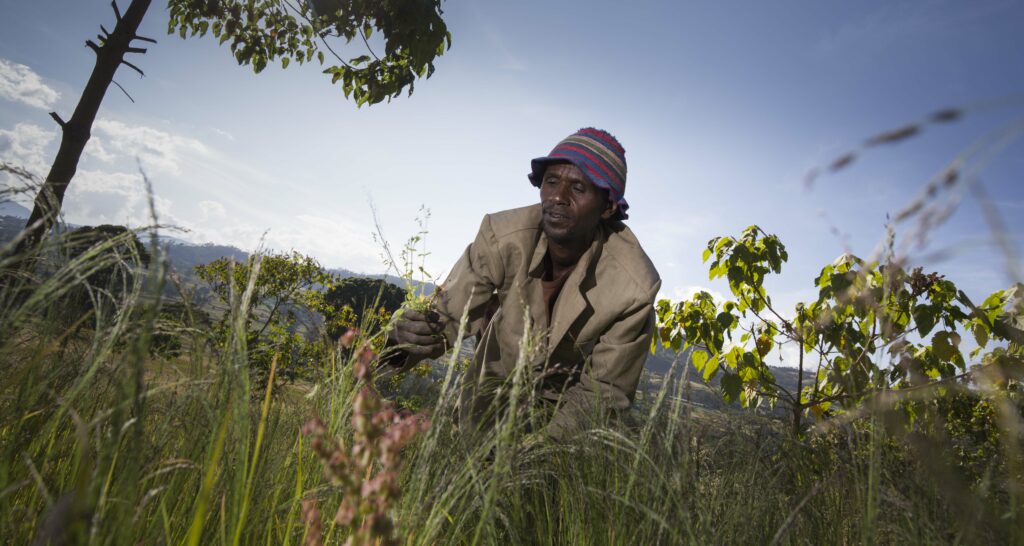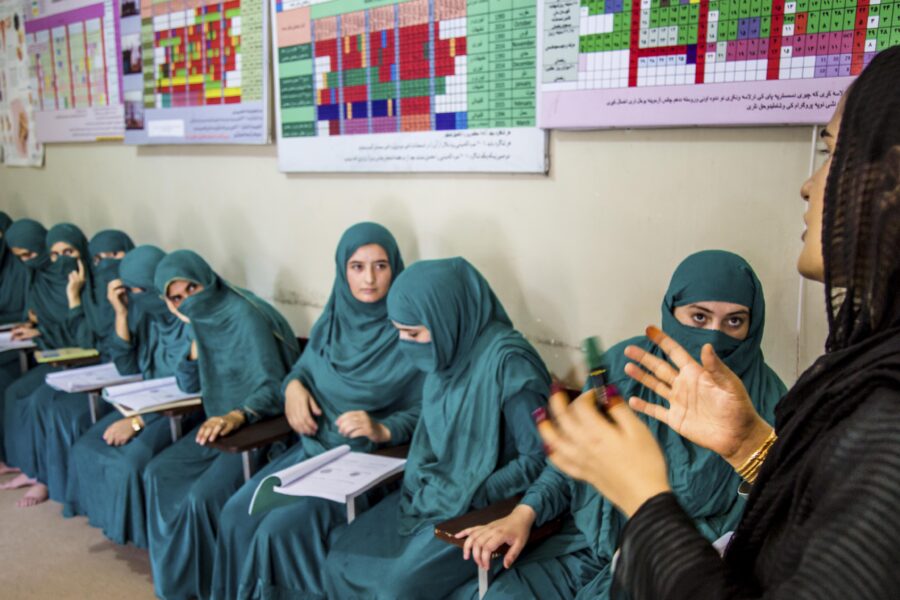Better living through nutrition: how tackling malnutrition can transform Africa’s development
Despite the will, many developing countries lack the resources to deal with a problem that ravages at both the national and individual level. We need smarter, context-specific solutions on nutrition that can catalyze sustainable change
Health — Middle East and Northern Africa, Sub-Saharan Africa

Malnutrition is a frequently used but less well understood word. It refers to all forms of unfavorable health conditions that result from inadequate diets, or health conditions that cause a person to lose the nutrients they’ve consumed, for example through frequent diarrhea or vomiting. Undernutrition is a form of malnutrition caused by a deficiency in one or more specific nutrients. It’s also possible for an individual to have too little of some nutrients and too much of others. Such imbalances lead to different forms of malnutrition. For example, malnourished children can:
- be too short for their age (stunted)
- weigh too little for their height (wasted)
- weigh too much for their height (overweight)
Another example is when adults become overweight or obese and develop type-2 diabetes, high blood pressure, or some cancers.
In all these forms of malnutrition, the result is poor health outcomes, often needing frequent or chronic medical attention, at much cost to households and governments. Taking action on Sustainable Development Goal (SDG) 2, to foster zero hunger and prevent all forms of malnutrition, therefore contributes to attaining SDG 3 on promoting good health and well-being, while also reducing health costs.
Governments focus on investing in health systems, medical technologies, training, medical practitioners, and treating illnesses. They give us statistics like the number of doctors or nurses per 1,000 people. Less attention, however, is given to the need for greater investment in nutrition. No matter how much governments invest in health systems, good health will be difficult to attain without good nutrition. Indeed, medication without the right food and nutrients can lead to undesirable complications. Better nutrition that helps to prevent malnutrition is cost-effective.
The cost of malnutrition in Africa
Many low and middle-income countries, including most African countries, face the persistent challenge of high levels of undernutrition, characterized by high prevalence of stunting and wasting. The 2020 Global Nutrition Report showed that 29% of children in Africa were stunted, with 24 countries having stunting prevalence over 30%. The cost of undernutrition has been estimated across 21 African countries through joint studies of national governments and the African Union supported by the World Food Programme. They clearly show how costly undernutrition can be, ranging from 2% of gross domestic product (GDP) in Egypt to 17% of GDP in Ethiopia.
These are staggering economic losses. If we flip these figures, can you imagine any government investing in something that resulted in a 17% gain in GDP (or 2% for that matter)? It would be an astonishing investment that political leaders would deservedly brag about. But we also know that, due to lack of data, these estimates do not account for the full cost of malnutrition. To see the full picture, we would need to add the costs of treating other resulting conditions: overweight, obesity, diabetes, high blood pressure, and diet-related cancers. Simply put, malnutrition is expensive for any government.
Malnutrition is also costly from an education perspective. The Cost of Hunger in Africa studies have associated up to 18% of school repetitions (pupils having to repeat a school year) to stunting. Another estimate was that stunted children completed up to four fewer years of school, undoubtedly reducing economic earning potential in adulthood. Malnutrition can therefore be a curse: not just for health systems but also in how it limits people’s potential to attain decent work and constrains economic growth (both targets under SDG 8). Malnutrition also makes SDG 1 (on poverty eradication) difficult to achieve. In fact, malnutrition can limit the attainment of at least five SDGs (1, 2, 3, 8, and 10) while being impacted by 10 SDGs. And of course, this in turn means SDG 17 is critical to ensure coordinated and aligned actions among all relevant stakeholders.
Scaling up nutrition
Finance ministers must assess the losses accrued as a result of not investing in nutrition. The efforts of the African Leaders for Nutrition Initiative, implemented by the African Development Bank and the African Union to promote investment in nutrition, are therefore commendable. This initiative has coined the phrase, “investing in Africa’s grey matter infrastructure” by governments. This refers to the negative impacts of malnutrition on children’s brain development, limiting earning capacity in adulthood. It would be highly desirable to see African governments dedicate fixed percentages of national GDP to nutrition. Why not? Malnutrition is eroding national GDP year after year, like a leaky tap whose losses can only be stopped by investing in nutrition.
So, what does investing in nutrition really mean? What should national and development partner budgets be allocated to?
Today, 41 of the 54 African Union member states are part of the SUN (Scaling Up Nutrition) Movement, and many have over time developed policies targeting nutrition in some form. Many African countries, therefore, have an enhanced nutrition policy environment, but unfortunately struggle to effectively implement them at scale due to resource constraints. This calls for finance ministers to review the intended actions of existing policies towards providing regular and predictable funding for:
- nutrition services
- coordination structures and mechanisms across different government sectors and at different administrative levels from national to community level
- better training and deployment of enough nutrition professionals to implement programs effectively
Yes, countries face resource constraints, making prioritization a must. Prioritization must target catalytic actions for a given country context. Answering the question, “what would be catalytic in a given context?” is critical and must be informed by available evidence. If the evidence is not there, investing in research is essential. Otherwise, targeting the most catalytic actions becomes a challenge, leaving countries unable to get the most from the limited resources available and losing out on potential catalytic momentum. Similarly, development partners must seek to be catalytic in their actions. This would be “investing smart.”
The ongoing United Nations Food Systems Summit 2021 process is a welcome effort and potentially catalytic for nutrition. The Lancet Commission Report of 2019 rattled us with recommendations that called on people everywhere to collectively consider the food choices they make, not just for nutrition but also for long-term food security and planetary sustainability. It warned that ignoring the impact of our food systems on the environment, from production to consumption, would not be wise. What would be the consequence for future food security? Should African countries be worrying about the environment when so many still face significant food insecurity? These questions bring us to the SDGs on managing and protecting life in water and on land (SDGs 14 and 15), adopting responsible consumption patterns (SDG 12), ensuring affordable and clean energy (SDG 7), and climate action (SDG 13). By addressing these SDGs, we protect future food security and nutrition.
African countries cannot afford to ignore the environment. Doing so would limit our ability to sustain food security and nutrition over time. Africa is already experiencing significant climate variability with frequent droughts and floods in some settings. Nuanced action is needed. For example, many countries need to increase consumption of animal-derived foods to address nutrient deficiencies. Yet they also need to increase productivity of different foods including the animal derived foods, while adopting best practices to manage soil and water; mitigate against biodiversity loss and environmental damage; and limit climate change. Meeting the nutritional needs of Africa is not only about people today but also about future generations.
It makes good sense to invest in nutrition and the food system that delivers it. The benefits are many, and not doing so is a cost we must not entertain.





